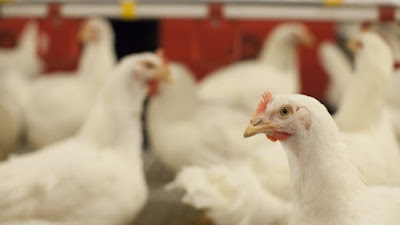Antibiotic-free Solutions for Poultry
Reducing — or even preventing — the use of antibiotics in poultry operations has become a very important issue in recent years. Consumers are continuing to drive the demand, and opinions on antibiotic use in meat production have taken a top spot on the list of food concerns. While antibiotic usage is often acceptable to poultry producers, they should consider alternatives practices in order to stay competitive in today’s market.
Antibiotic-free Solutions for Poultry production
Bacterial Resistance
Increased bacterial resistance to antibiotics has caused regulatory boards to become stricter about antibiotics in animal feed. The biggest concern is that antibiotic residue could be found in the meat and could possibly, then, be transferred to humans through food consumption.
The Food and Agriculture Organization (FAO) of the United Nations estimates that antimicrobial resistance is a cause of death for 700,000 people a year worldwide. The large-scale use of antibiotics could significantly increase that number, leading to the death of up to 10 million people by 2050. This issue is also of concern for the World Health Organization (WHO), which states that, if measures are not taken to contain this situation, superbugs will be more lethal than cancer by 2050.
Marketability
In markets like Europe, where large multinational supermarkets and fast food chains are now demanding antibiotic-free products, it’s more important than ever for producers to be aware of the concerns about antibiotic residues in meat in order to continue successfully exporting their meat.
The use of performance-enhancing antibiotics in animal nutrition has been banned in European Union (EU) countries since 2006, putting them ahead of the curve. Additionally, since the EU has a relationship with other important markets, they are also restricting the consumption of food products from animals whose diets include antibiotics. Clearly, if other countries want to export their products to the EU, adapting to these new standards of production will be necessary.
Antibiotic-free Solutions
At first, it may be difficult for producers to adapt their operations to a new diet. To help make this a smooth transition, take inventory of your operation and determine where you might be able to integrate new high-tech equipment. Also, implement an efficient and high-quality vaccination program that will keep your birds healthy and reduce the need for antibiotics.
Before making this change to the birds’ diet, it is important to consult with a technical nutritionist to evaluate environmental factors, such as water and air quality, as well as the ration and vaccination program, and to avoid any sanitation issues on the operation.
Natural alternatives to antibiotics are also available. Researchers have worked diligently to find solutions that are not harmful to human health while maintaining the quality and productivity of poultry operations. Companies and universities around the world are partnering to study and explore various natural solutions as alternatives to antibiotic use.
Three natural alternatives to potentially include in your birds’ diets are probiotics, prebiotics and organic minerals. Probiotics are beneficial microorganisms that keep the intestine healthy and support the birds’ development. Prebiotics prevent the growth of harmful bacteria in the animal’s gut, and organic minerals are essential for the general development of all animals.
A recent study by Veterinary site analyzed two groups of birds: one group with antibiotics in their diet and the other group fed an antibiotic-free diet that included natural, yeast-based solutions. The results showed that the flock’s health in each group was comparable. In addition, the antimicrobial-free birds showed a significant increase in weight, improved intestinal function and a lower mortality rate.
It’s becoming clear that the preference for antibiotic-free feeds and products is not merely a market trend; rather, it is an inevitable change that promises to become increasingly more present in our daily lives. Producers must adapt to this new reality in order to remain competitive in the protein industry. It is possible to reduce the use of antibiotics while still maintaining the quality, health, productivity and profitability of the operation by using natural alternatives.

